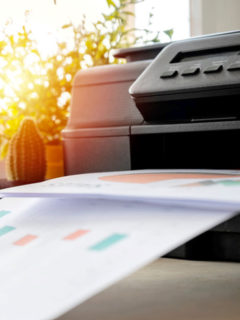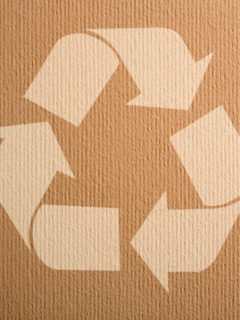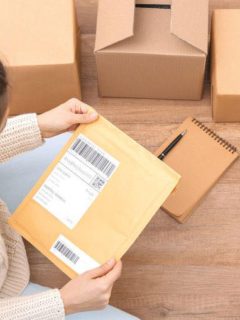When talking about the future of packaging, the concept of “sustainability” must always be considered. To embody this sustainability, several official eco-responsible labels have been created. Do you know what these labels mean? And what value do your customers place on them? You can read about it in this article.
.
1. Overview of eco-friendly labels
In order to provide as clear a picture as possible of the most common eco-packaging labels, we have made a distinction between European labels and regional labels (e.g. from Belgium, France or the Netherlands).
1.1 European eco-labels
Did you know that the Mobius loop is one of the most well-known eco-labels in Europe? A 2020 study showed that 86% of consumers know that this logo confirms that a package is recyclable.1 These famous arrows are found in the logos below, among others:
..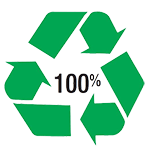 |
. The number inside this Mobius loop indicates the percentage of recycled materials from which the final product is made. The logo was designed in the late 1970s by American Gary Anderson. It is now used around the world as a symbol of recycling. |
.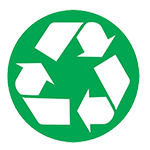 |
. Do you see this symbol? It denotes fully recyclable packaging or products. This variant of the Mobius loop is mainly used for paper or cardboard packaging. |
.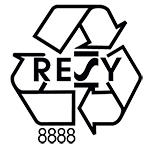 |
. The RESY symbol is found on paper or cardboard packaging from'Germany. It guarantees that the packaging has been made from recycled materials and can be recycled again. The number under the arrows indicates the manufacturer or supplier identification number. |
.plastic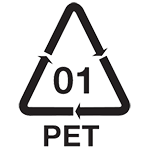 |
. This symbol is used on packaging made of recyclable plastic. The number indicates the type of plastic that makes up the packaging. It helps the consumer to sort it, which allows for better recycling. Here you will find an overview according to the packaging identification codes. |
In addition to the famous Mobius loop above, there are many other official logos and symbols that underline the eco-friendliness of a package or product. The most important of these are listed below:
.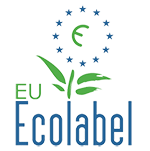 |
. The “eco-label” is a label awarded by the EU to the best products for the environment, without compromising on quality. Due to the very strict requirements, only 10-20% of the products on the European market can carry this label. At RAJA, you will find it, for example, on our wiping spools or printers paper. |
.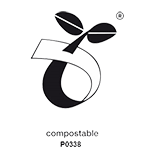 |
The following logo is managed by European Bioplastics : the organisation of producers of organic plastics. Products bearing this label can be composted, but only under industrial conditions.2 The PLA cups are examples. Good to know: this label is only valid if the license code is also mentioned; it always consists of the letter P followed by 4 numbers. |
| . . 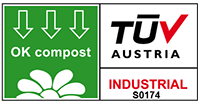 |
The OK Compost INDUSTRIAL certificate indicates that a product is 90% degradable in industrial composting conditions (within 6 months).2 Good to know: this label is only valid if the licence code is also mentioned: it always consists of the letter S followed by 4 numbers. You can use this same code to find out more about the product on the TÜV website. |
| . .  |
This logo is used for products that can be processed into compost, even at home (hence the word “HOME”). The products in question must be at least 90% degradable (within 6 months) and may not contain any heavy metal residues. Good to know: this label is only valid if the licence code is also mentioned: it always consists of the letter S followed by 4 numbers. You can use this same code to find out more about the product by searching for information on the TÜV website. |
.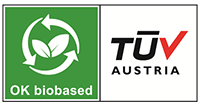 |
. OK Biobased is also a TÜV label for products that consist of renewable raw materials. The number of stars (from 1 to 4) determines the percentage of organic raw materials in the product. |
. |
. This OK Biodegradable Soil logo indicates that the product does not contain any harmful substances and has been 90% degraded in the soil within 2 years. |
. |
. Like the logo above, this certificate guarantees that the product is 90% biodegradable. In this case for fresh water instead of soil. |
.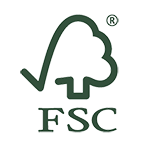 |
The Forest Stewardship Council or FSC is an umbrella organisation for environmentally responsible forest management. The FSC works with the same set of rules worldwide. Paper and wood packaging can carry this logo if it is made of at least 70% certified material. At RAJA, you will find this label on our glassine paper bags, paper pockets, etc. |
.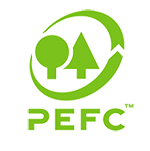 |
PEFC stands for Program for the Endorsement of Forest Certification. Products bearing this logo are made up of at least 70% of paper or wood from responsibly managed forests. It differs from the FSC logo in that the certification is based on ISO standards (determined by an external party who may impose different rules per country). |
.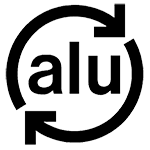 |
. This symbol confirms the presence of recyclable aluminium in the product. Sometimes the arrow inside says “AL”: this is the official chemical abbreviation for aluminium. This is a voluntary logo and does not indicate the recycled content of the packaging. |
.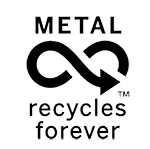 |
. Do you see this symbol? It means that the packaging is made (entirely or partially) of recyclable metal. Magnets can be used to sort this waste and re-melt it into new products. The logo was developed and verified by the Metal Packaging Europe. |
. |
The Green Dot indicates that the producer has paid a contribution for the separate collection, sorting and recycling of the packaging material. Although the symbol is not mandatory, the contribution must be paid. This symbol is associated with the Packaging Recovery Organisation Europe (PRO Europe), an umbrella organisation for packaging organisations responsible for the collection and recycling of packaging in their country. |
1.2 Regional eco-labels
In addition to the internationally recognised eco-labels, there are regional variants that apply at national level. We have put together some popular logos from Belgium, France, Germany and the Netherlands.
..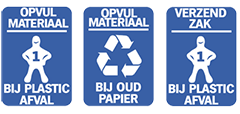 |
This Guide for the Disposal of Dutch Packagingis the result of the cooperation between Albert Heijn, Nedvang and Milieu Centraal. These labels help consumers to dispose of their packaging in the right way, so that as much packaging waste as possible can be recycled. |
.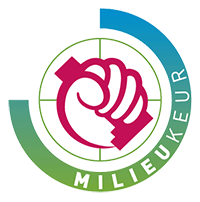 |
. Milieukeur is the Dutch national label for sustainable non-food products and services. This label assesses the environmental and quality requirements of these products and services. In addition to packaging and waste, other criteria such as raw materials, energy, climate, water quality and quantity are also examined. |
.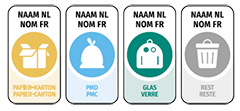 |
. Like its Dutch counterpart, this guide to the disposal of packaging belgianfrom Fost Plus serves to inform the consumer about the different sorting possibilities per packaging material in Belgium. |
.plastic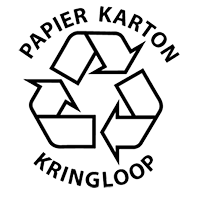
| . The logo Papier Karton Kringloop indicates that the packaging can be recycled with waste paper. It does not provide any information about the production, the product in the packaging or the paper cycle. This logo is not mandatory and is therefore not monitored. |
.plastic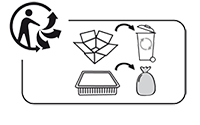 |
. The Triman symbol (top left of the image), adopted by French legislation since 2015, indicates that the packaging is recyclable. In addition, it specifies which part of the packaging can be recycled and how the consumer should sort it. |
.plastic |
NF environnement is a French label for environmentally responsible products (introduced in 1991). It guarantees that production is carried out in an environmentally friendly manner, without compromising the quality of the final product. The label is managed by the French Association for Standardisation (AFNOR), a public interest foundation responsible, among other things, for the preparation of standards. |
.plastic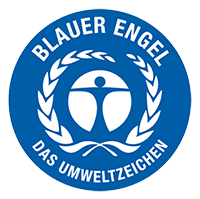 |
. The Blue Angel (Der Blauer Engel) is a German label for environmentally friendly products, introduced in 1978. It guarantees that products and/or services are environmentally friendly. The label is anchored in German law and is the responsibility of the German Ministry of the Environment. |
2. The importance of eco-friendly labels for your business
Eco-responsible labels are much more than just an information tool for consumers. They contribute positively to the customer’s experience, to the brand’s perception and to the company’s image. Here we present the top 3 reasons why your packaging should be distinguished by an eco-responsible label.
2.1 Meet your customer’s expectations
The average consumer (and therefore your customer too) is increasingly aware of the environmental impact of their daily activities. Whether in a physical shop or online, the packaging they buy should have as little impact on our planet as possible. By choosing eco-friendly packaging labels as a business, you are showing that you share the consumer’s belief.
European research by DS Smith3 (2021) confirms that sustainability is a key factor in shoppers’ decision-making. We have compiled some of the findings below:
- 64% of consumers are willing to shop elsewhere if less packaging is used.
- 29% of consumers have stopped buying a brand because the packaging was not environmentally responsible enough.
- 38% of consumers say they consider packaging labels when shopping in a physical shop.
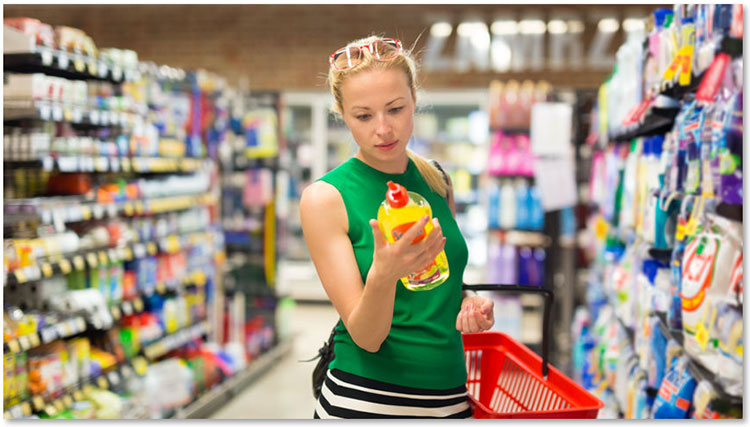
2.2 Showcase your brand
If you follow the eco-packaging market closely, you probably already know this: according to a study by Tonula1 (2020), 44% of consumers would be willing to spend more on a product packaged with environmentally responsible materials.
What does this mean to you? The inclusion of eco-friendly labels on your packaging is an important lever for differentiation and improving customer perception. These elements allow you to highlight your added value and make your brand stand out to consumers.
2.3 Show your customer the way to a sustainable future
A study by ProCarton4 found that 52% of European shoppers are actively looking for products that are packaged in an environmentally friendly way. However, it can be difficult for consumers to determine how sustainable a package really is. Eco-responsible labels are therefore an essential tool for making the right choice.
PLA is a good example.
By adding eco-labels to your packaging, you show your customers at a glance what kind of product they are buying. Some logos also help your customers to recycle: they indicate where the packaging should be dropped off and collected. Clear and practical for everyone!
3. Ready for a fully eco-responsible packaging strategy?
If your company voluntarily chooses packaging with an eco-friendly touch, it is often one step ahead of its competitors. Do you want to go a step further? Think about what other aspects of the packaging strategy you can “green”. This starts with the choice of cushioning and protective material inside your crate. Have you thought about the following eco-friendly alternatives?
Please note that this is not a complete list.
- Corn cushioning particles : made of'air,'water and'vegetable starch. They are degradable after contact with water. Ideal for filling the gaps in your crate.
- Embossed wrapping paper (100% recycled and recyclable): the eco-friendly alternative to plastic bubble wrap. Ideal for protecting your products against shocks.
- Wrapping paper (100% recycled and recyclable): ideal for wrapping and protecting your products with a material derived from renewable resources.
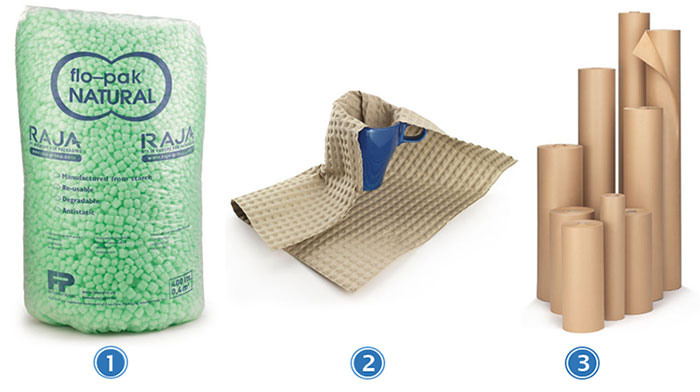
When it comes to packaging techniques, you can work in a more eco-responsible way by paying attention to the weight and size of your packaging, for example by means of the following solutions:
Sustainable packaging for your packaging
- Variable height crate : the height of this type of crate is perfectly adaptable. The smaller your product, the smaller your crate can be. This saves you a lot of money on cushioning material, but since the packages are much more compact, one vehicle can carry much more!
- Mailbox Boxes : these boxes are suitable for very thin products. They fit easily into the standard slot of a mailbox. This way, your orders are often delivered on the first attempt. This considerably reduces the number of trips made by the delivery service. And fewer trips mean fewer CO2 emissions.
1 Tonula study for Twosides. European consumer preferences for packaging. (2020)
2 Composting “at home” or in an “industrial” environment (i.e. at a higher composting temperature) depends on local regulations. Inform your waste disposal service in advance if such compostable items are allowed in the fraction to be processed. Compostable products are made from renewable resources and therefore have a lower impact on the environment than products made from fossil fuels, especially if they are intended for single use.
3 Study by Ipsos and DS Smith. Sustainable packaging: has the COVID-19 pandemic changed everything?
4 Study by Pro Carton. Study on European consumers’ perceptions of packaging. (2018)











